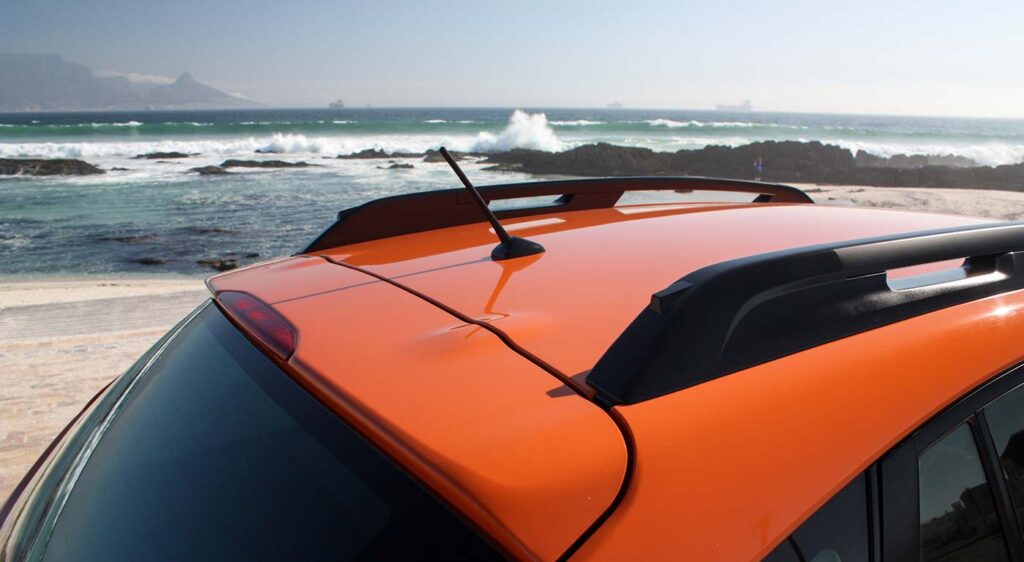You ever stare at your car roof and wonder if those crossbars are just sitting there laughing at you? Like, you’re not even hauling anything half the time, yet they’re up there, cutting air, maybe sipping on your fuel money like it’s free lemonade. I had this thought once while stuck in traffic, watching a guy with an empty roof rack like it was a crown he didn’t need. My brain went… is he just lazy, or does he know something I don’t?
The thing is, roof crossbars are not just harmless decoration. They’re basically wind-catching sticks. Aerodynamics? Yeah, that’s where it hurts. U.S. Department of Energy stats once noted that roof racks (crossbars included) can chop fuel efficiency by 2 to 25 percent depending on speed and design. Twenty-five percent is not a “meh” number. That’s like throwing a fifth of your gas tank into the wind and saying “whatever.” At highway speeds, the drag force is way more than you think—air turns into a wall, and your car’s fighting it all the way.
But taking them off isn’t a free lunch either
Here’s where it gets messy. Removing crossbars isn’t like taking your hat off. Some factory racks need tools, a bit of elbow grease, and a willingness to store the things somewhere you won’t lose the bolts. I once stuffed mine behind the garage freezer and forgot them for eight months. Almost bought another set before I found them wedged between an old broom and a spider web that had its own postal address.
Also, some folks will say the gain in fuel efficiency isn’t worth the hassle unless you’re driving long distances regularly. And they’re not wrong. If you’re mostly doing city speeds—stoplights, short hops—the drag hit is smaller. But, here’s the catch, the extra wind noise? Oh yeah. Even in city speeds, some crossbars whistle just enough to make you roll your eyes on a long drive.
The silent wallet thief: fuel economy
There’s something painfully sneaky about losing money without noticing. The EPA did studies on roof-mounted cargo systems (crossbars plus the gear you put on them), and they found sedans with an empty rack could lose about 1 mpg, while SUVs could drop more depending on their design. At first, you’re like “1 mpg, big deal.” But multiply that over months of commuting, and suddenly that’s an extra tank or two a year… gone.
If you do the math, a commuter running 15,000 miles a year at $3.80 a gallon could be paying $50 to $150 extra annually just for the privilege of leaving crossbars on with nothing attached. That’s enough for a decent dinner out. Or three oil changes. Or, if you’re me, a pile of snacks you probably didn’t need.
Weather and rust and the slow decay of nice things
Nobody talks about how UV exposure and rain nibble away at crossbars. Even the ones with “weather resistant” coatings eventually get that faded, pitted look. And if you live near the coast, salty air is a little demon. Leave crossbars on year-round, and you’re giving rust a VIP invite. Plus, some mounts have rubber pads that sit against the paint—dirt gets trapped under there, and after a couple seasons you might notice little scuff rings that won’t wash out.
I saw a guy once in a supermarket parking lot with what looked like a perfect shadow of his old crossbar feet permanently etched into his roof paint. Bet he didn’t plan on that.
But… convenience is addictive
Here’s the truth: if you use your crossbars every other week, taking them off is just asking for trouble. You’ll need them, you’ll curse, you’ll waste a Saturday trying to re-align them. Some designs, especially on older SUVs, require awkward positioning, and the clamps pinch your fingers if you’re not careful.
So the argument boils down to this awkward split—leave them on, lose a little fuel and maybe some finish… or take them off, save a bit of money and paint, but add a hassle to your life. And hassle has its own value, especially if you’re the forgetful type who ends up with half-assembled racks and a dog staring at you because you’re late for the trip.
My gut answer, but not yours
If you’re only using crossbars for the annual camping trip or that one ski weekend, I’d say pull them off. You’ll save money and maybe avoid hearing that constant “shhhhhh” wind noise at 65 mph. If you’re hauling kayaks, bikes, or work gear weekly, leave them on—fuel cost might sting, but convenience is a weird drug, and you’ll forgive it.
Me? I keep mine off most of the year now. Took them off one summer and realized the car felt just a little smoother, quieter too. And yeah, maybe I’m imagining half of it. But that’s the thing—sometimes it’s not even about the stats, it’s about the way you feel driving. And for me, bare roof just feels… right.

